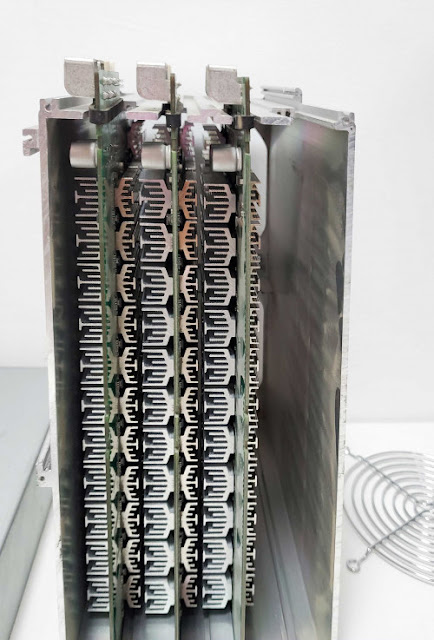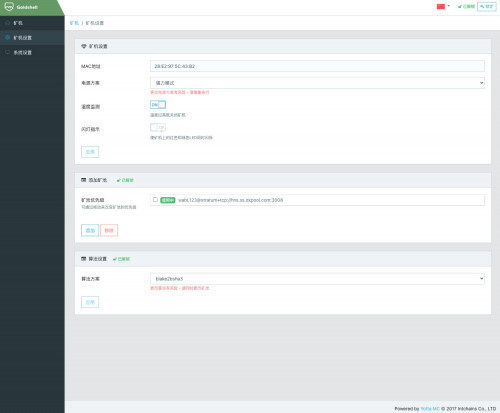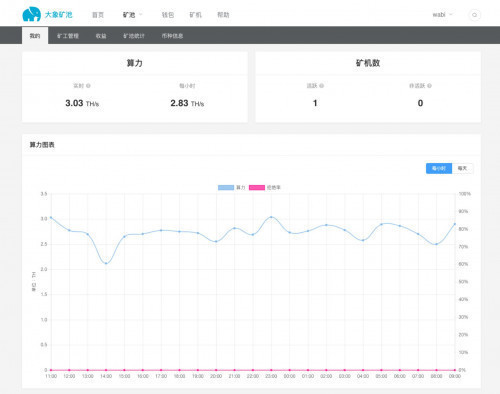ASIC Miner ICERIVER KAS KS0 Profitability In the realm of cryptocurrency mining, the Iceriver KAS KS0 miner has garnered widespread attention. Tailored specifically for the Kaspa network's KHeavyHash algorithm, it boasts high hashing power and low power consumption, making it an ideal choice for many miners. In this article, we will comprehensively assess IceRiver KS0 profitability while considering the Kaspa market conditions and the attributes of KS0 miner. Kaspa Market Dynamics Kaspa is a vibrant cryptocurrency network aimed at delivering high performance and scalability for everyday transactions. At the time of writing this article, the Kaspa coin trades at approximately $0.04959. But it's essential to note that cryptocurrency markets are highly susceptible to price volatility. Hence, investors must remain vigilant about market dynamics. Additionally, the Kaspa network's mining difficulty and reward mechanisms play a role in mining returns. Attributes of the IceRiver KS...
Goldshell HS5 Miner Evaluation
Compared with the previous products, Goldshell HS5 has two significant points worth paying attention to:
The first is the performance increase. The official website states that the hash rate of HS5 can reach 2700Gh/S. Compared with HS3-SE, HS5 has spent all its efforts on internal structure. The splendid image of HS5 can finally convince miners that it is a profit-oriented HNS miner, not an intelligent appliance.
Secondly, HS5 is a miner that supports HNS and SC dual mining, which means you are 50% less likely to shut down than other ASIC miners.
Performance parameters:
Rated hash rate | HNS | 2700GH/S±5% |
SC | 5400GH/S±5% | |
wall power consumption | HNS | 2650W/h±5% |
SC | 1500W/h±5% | |
Indoor noise | ≤80db | |
Connection method | Ethernet | |
Miner size | 264mm*200mm*290mm | |
Total Weight | 8.5kg | |
Operating temperature | 0~35℃ | |
Input voltage | Only supports 176~274V | |
Payback period
Through the coin mining income calculator, the daily income of two different algorithms has been calculated successively, which can be very pleasant, and the return period is also quite ideal.
Miner appearance
The HS5 follows the integrated design of the aluminum alloy body of the previous HS series, and the size of the bare metal is the same as that marked on the official website. The weight of HS5 is only 8.5 kg, which is about 5 kg lighter than ordinary ASIC miners.
Above the fan on the front of the chassis is a fairly standard design: IP reporting button, Ethernet interface, SD card slot, reset button and status indicator, and the main switch button of the miner is located above the power supply.
Remove the top case to reveal the main control board. In the middle of the main control board is the iMAPx912 main chip, with a 2G flash memory next to it.
When the fan is removed, the structure of the chassis and the hash board can be seen. This pull-out hash board is very convenient for miners to clean and maintain and is currently the mainstream chassis structure.
The fan model is Snowfan YY1203, DC12V, a more common fan for mining farm models.
There are 46 chips on each hash board, and the whole miner has 184 chips. This HS5 miner uses a distributed heat sink. The advantage is that although the number of chips is large, the overall weight has not increased significantly. The Antminer T17 also uses this craft. If you look closely, the heat sink material on the front and back is not the same. The front is aluminum alloy, and the back is aluminum alloy plated with nickel, which is convenient for soldering.
The picture below shows a collection of all parts of the miner.
Run the test
Goldshell HS5 comes with its power cable, connects the power supply and network cable, turns on the miner's main switch, the indicator light is on, indicating that the miner starts to operate normally.
Open the miner management backstage and select the algorithm to configure the mining pool.
Note that the mining pool information should also be modified accordingly when switching algorithms.
After the two algorithms have been running for nearly 20 hours, let's take a look at the local hash rate and the mining pool hash rate of the two algorithms respectively.
The measurement result is that the mining pool side is slightly higher than the local side.
Let's look at the different power consumption of the two algorithms. HNS is 2497w, SC is 1387w, which are much lower than the official website.
The noise of the two algorithms and the air inlet and outlet temperature are not much different. The near-miner decibel is 83.2, the air inlet temperature is 24.1 degrees Celsius, and the air outlet temperature is 47.9 degrees Celsius.
Running data comparison:
HNS official website data | HNS measured data | SC official website data | SC measured data | |
Power consumption | 2650W/H±5% | 2497W/H | 1500W/H±5% | 1387W/H |
Hash rate | 2700GH/S±5% | 2830GH/S | 5400GH/S±5% | 5550GH/S |
The content and pictures of this article are from the Internet, compiled and edited by ZEUS MINING.



















Comments
Post a Comment
Tell us your opinion